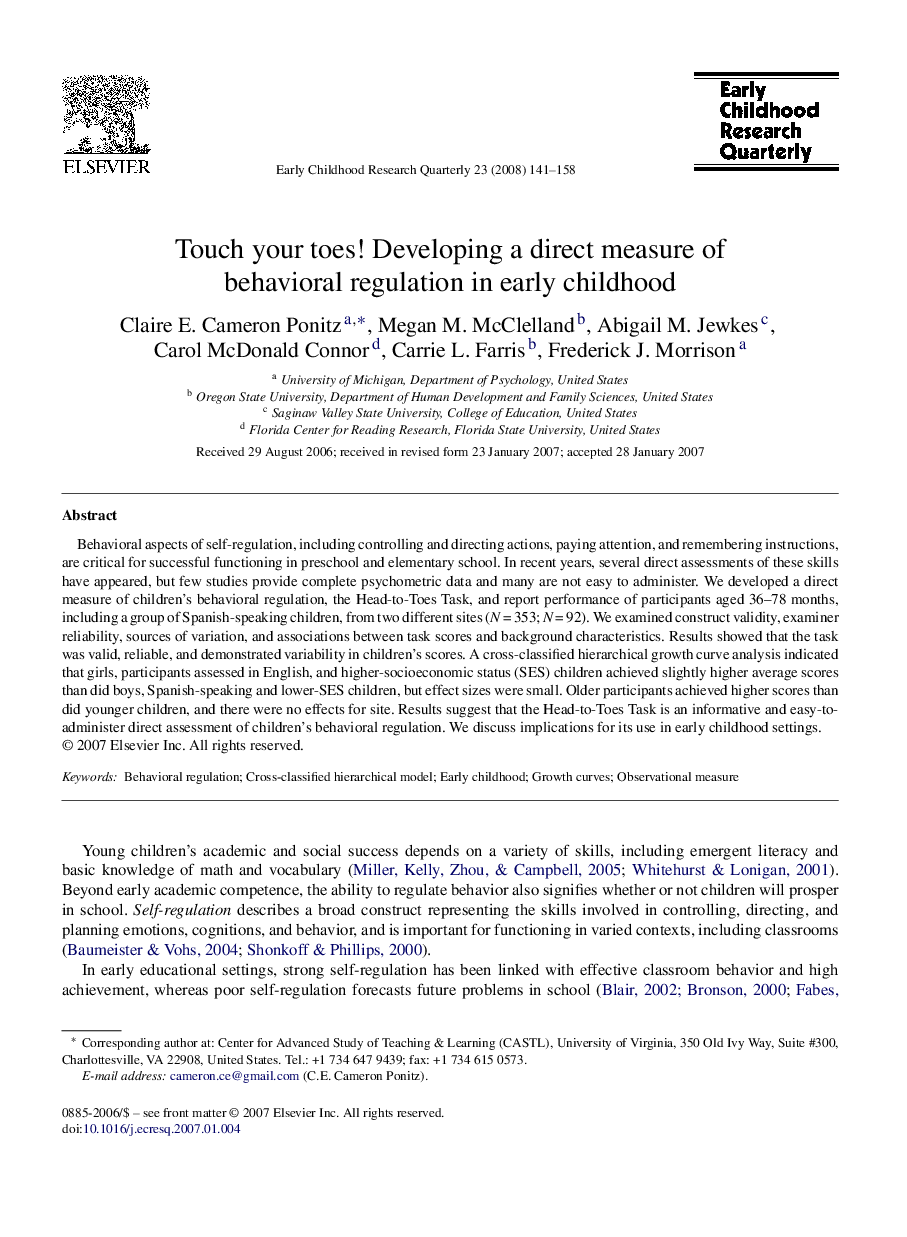| Article ID | Journal | Published Year | Pages | File Type |
|---|---|---|---|---|
| 354043 | Early Childhood Research Quarterly | 2008 | 18 Pages |
Behavioral aspects of self-regulation, including controlling and directing actions, paying attention, and remembering instructions, are critical for successful functioning in preschool and elementary school. In recent years, several direct assessments of these skills have appeared, but few studies provide complete psychometric data and many are not easy to administer. We developed a direct measure of children's behavioral regulation, the Head-to-Toes Task, and report performance of participants aged 36–78 months, including a group of Spanish-speaking children, from two different sites (N = 353; N = 92). We examined construct validity, examiner reliability, sources of variation, and associations between task scores and background characteristics. Results showed that the task was valid, reliable, and demonstrated variability in children's scores. A cross-classified hierarchical growth curve analysis indicated that girls, participants assessed in English, and higher-socioeconomic status (SES) children achieved slightly higher average scores than did boys, Spanish-speaking and lower-SES children, but effect sizes were small. Older participants achieved higher scores than did younger children, and there were no effects for site. Results suggest that the Head-to-Toes Task is an informative and easy-to-administer direct assessment of children's behavioral regulation. We discuss implications for its use in early childhood settings.
